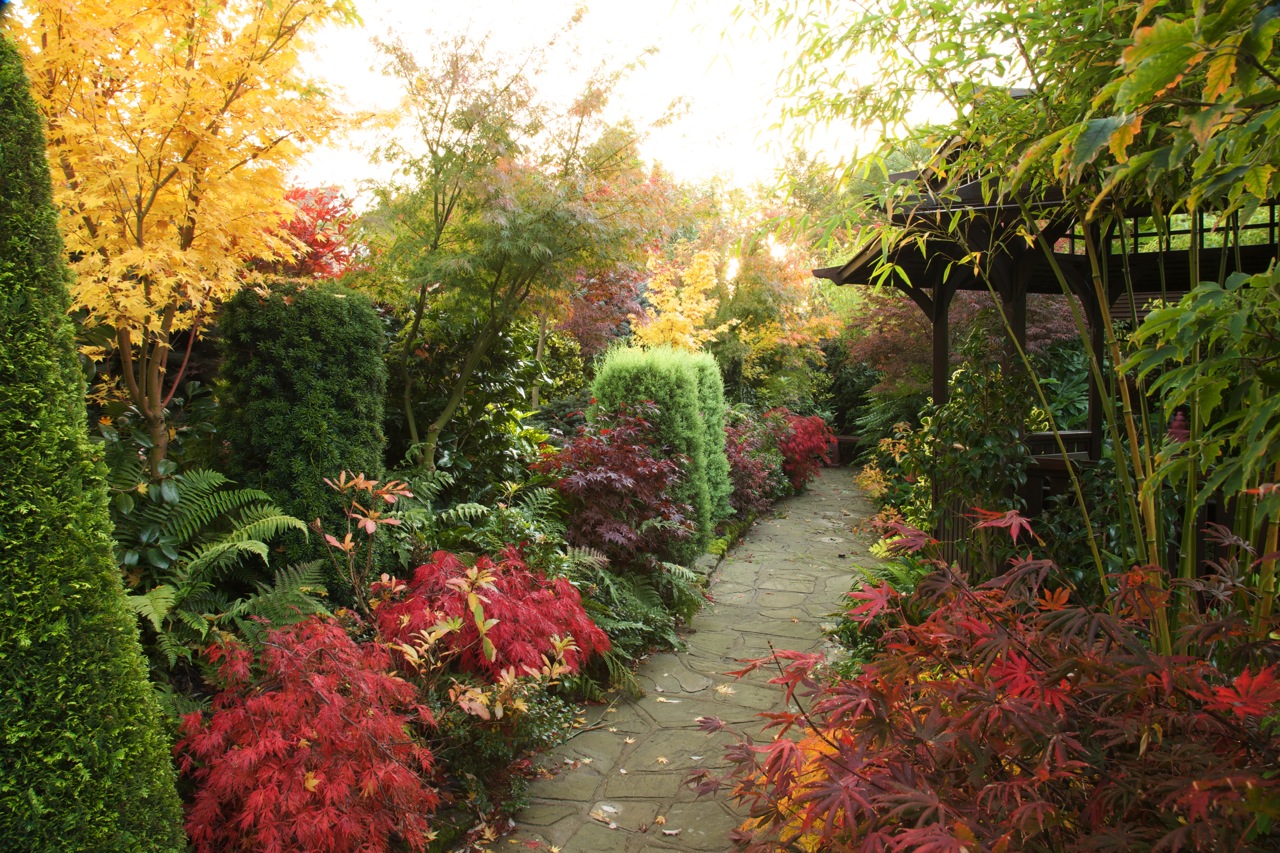
Most any New Englander will confirm that one of autumn’s favorite tourist activities in this region is the so-called “Fall Foliage Extravaganza”. This annual September to November progression of nature’s colors consistently lures viewers to the countryside, clothed in brilliant yellows, oranges and scarlet. Rural roadways can be jam-packed with “leaf-peeper” cars and buses for weeks, and some hotels book their accommodations far in advance. Some years the panorama is so spectacular (even though the weather may not always cooperate) that the natural landscape truly sets the standard for nature’s optimum splendor.
So let’s put the gardens around our own yards into this perspective. Although our home landscapes can’t match the immense scale of the Northeastern forests, we certainly have options to enjoy impressive fall colors in our own gardens. In addition to traditional native trees, many less well-known types display equally spectacular foliage, and they can be viewed on a more personal scale.
In the woods some plants start to show colorful foliage as early as September, even before the first frost. Our native Swamp Maple (Acer rubrum), Birches (Betula), Sumac (Rhus) (including Poison Ivy!) are generally among the first to color-up each year. Plants under stress can change color earlier than normal.
By the end of September many trees and shrubs become colorful as “peak” colors start their southward progress. These few weeks feature the trees for which our natural landscapes are most renowned: scarlet Sugar Maples (Acer saccharum), brilliantly glowing reds of Tupelo (Nyssa) and smoky-mauve-amber Ash (Fraxinus). Equally showy are the colorful tones of Cherry (Prunus), Shadbush (Amelanchier) and the Dogwoods (Cornus). And all of these are reasonable choices to use in our own yards.
Some less common species like Enkianthus, Stewartia, Katsura (Cercidiphyllum), Sourwood (Oxydendrum) and Sweetspire (Itea) are not naturally established in the wild. But along with many of the Azaleas, Viburnums, Spiraeas and Cotoneasters, they add variety and interest to the more standard and native types, and their foliage helps create some amazing autumn garden effects.
Even by the end of October and into November there’s a lot of color–if you know where to look. Late season color features include the leathery-scarlet/burgundy tones of the Oaks (Quercus), butter-yellow Ginkgo, the oranges, reds and yellows of Japanese Maples (Acer), Pears (Pyrus) and Blueberry (Vaccinium). Combine the now-vibrant dark-mahogany leaves of the Rhododendron PJM with a yellow-leaf conifer like Golden Thread Cypress (Chamaecyparis pisifera filifera ‘Aurea’) for continued enjoyment, even after snow has blanketed the ground.
A minimum amount of planning with local garden center experts will help you create striking displays that capture the essence of autumn right around your home or workplace; and they’ll continue to offer fall-foliage-viewing rewards for your family and visitors for years to come.
About the Author
Wayne Mezitt is a 3rd generation nurseryman, a Massachusetts Certified Horticulturist, now chairman of Weston Nurseries of Hopkinton, Chelmsford & Hingham MA, and owner of “Hort-Sense”, a horticultural advisory business. He currently serves in various capacities on several horticulturally-related organizations, including the Massachusetts Horticultural Society at The Gardens at Elm Bank in Wellesley MA, and chairman for the Massachusetts Invasive Plant Advisory Group (MIPAG).









